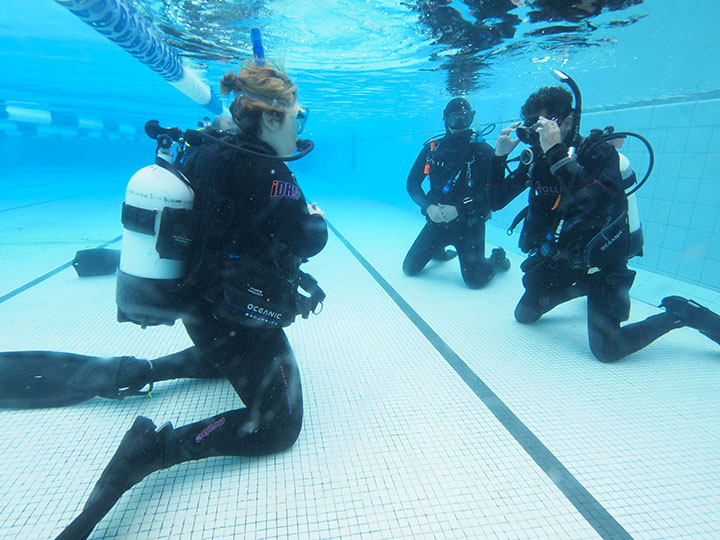You have 0 product(s) in your cart.
Abyss Scuba Diving
Preparing For Your Padi Divemaster Course

When I became a PADI Divemaster, I was extremely proud of my achievement, and of the time and effort I had put into the training. This set me up well for my PADI Instructor training, which followed not long after.
I get a lot of questions from budding PADI Divemaster candidates, asking what they need to do to prepare, and then succeed on their PADI Divemaster courses. So I thought I would share some of my thoughts and experiences with you all, to help you on your journey.
The first thing that needs to be established, is where you currently are on your journey towards becoming a PADI Divemaster. To enrol in a PADI Divemaster course, there are a number of courses that need to be completed prior, along with proven dive experience (logged dives). These courses are:
- PADI Open Water Diver (or equivalent)
- PADI Advanced Open Water Diver (or equivalent)
- PADI Rescue Diver (or equivalent)
- Emergency First Response (CPR and First Aid) training (or equivalent)
- 40 logged dives.
(You also need to be at least 18 years old and have a valid dive medical at the start of the PADI Divemaster Course).
The process of getting here is relatively straightforward. Most of the courses are completed with some online theory and then a couple of days of practical training for each course. This will give you 11 logged dives. The other 30 or so need to be achieved by spending time in the water gaining experience. Once you’re at this point, then you can enrol.
This is then where the basic 2-day course structure (with some online theory) stops.
So, what can you expect from the PADI Divemaster Course??
The PADI Divemaster course consists of around 8-10 days of practical training and around 15-20 hours of online theory prior to starting. The practical components consist of core developmental skills and practical application workshops, along with a number of practical assessments where candidates assist on real student diver courses and with certified divers, gaining valuable knowledge and practice for operating as certified PADI Divemasters. The best advice I have for those about to start the training, or for those looking at completing the training in the near future, is to either look at the requirements of the PADI Divemaster course in the PADI Instructor Manual (which you receive in the crew pack once signed up) or ask the Dive Centre you intend to complete the training with to send you some detailed course information so you can prepare.
Of note in these requirements is the Stamina Workshop, which requires you to complete timed swimming, snorkelling, towing and water-treading exercises. You need to complete these within minimum timeframes to pass, so you need to go out and practice these exercises before you are assessed. You will also be assessed demonstrating skills as part of a workshop, with minimum scores needed to pass. So spending some time at the end of a dive practising skills like mask removal and replacement, regulator recovery etc can definitely help get you ready. You will also be assessed giving a dive brief and leading certified divers, so listen closely to what other Divemasters are saying during their briefings when you are out on dives – this can serve you well later when it’s your turn.
And finally, pay attention to everything around you when out gaining dive experience. It is this dive experience that teaches you about safely entering and exiting the water, tidal changes, waves, surf, surge, currents, marine animals and interactions, and finally diver behaviours, which will all serve you immensely when it is your turn to show the world of divers what the oceans have to offer!
Here are some views of recent Divemaster candidates experiences
By Jamie Miller (PADI Platinum Course Director & Master Instructor)
Recent Posts





